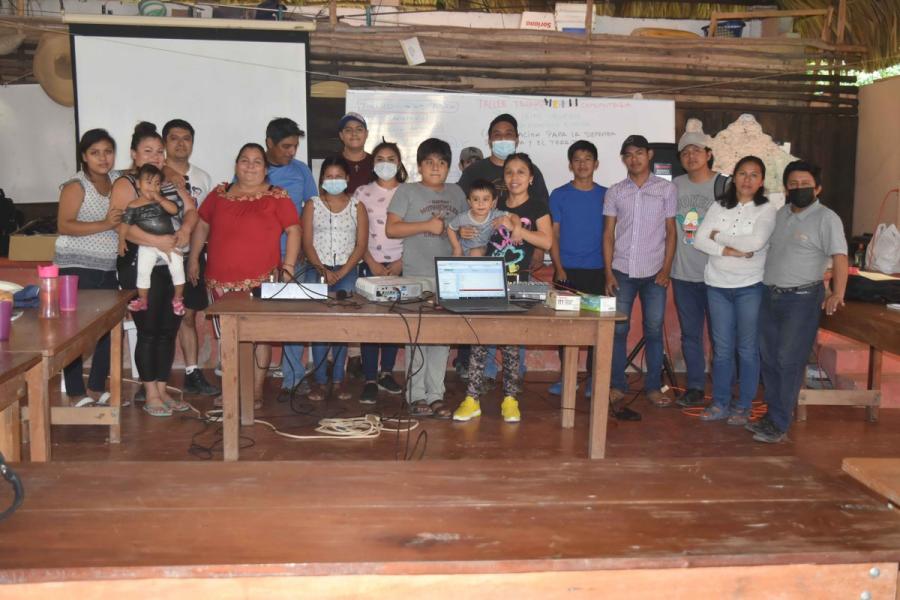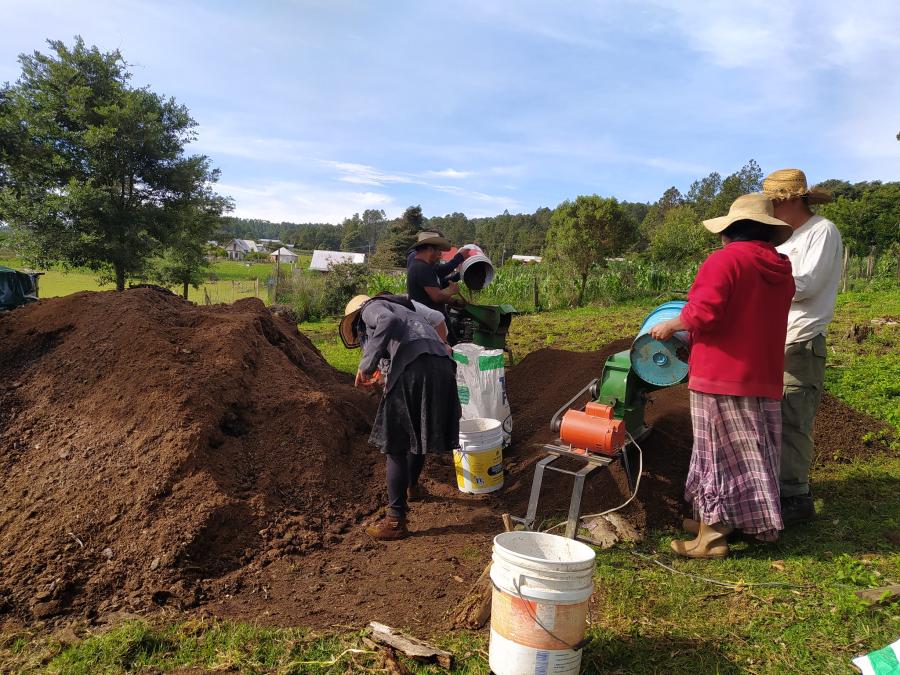In the rugged terrain of the northwestern Sierra Madre, in the Mexican state of Jalisco, live three linguistically distinct groups in Huichol Indians. They live on approximately 2,500 square miles of communal lands, relatively unaffected by Mexico's political, social, and religious history. This is due in part to the Huichol's resistance to cultural change, and in part to the land's remoteness and inaccessibility, and to its unsuitability for agriculture or ranching.
However, the Huichol now face new pressures from a society and world which bears no relation to their own. Forces and events are coming into play which the Huichol cannot resist. The changes will alter radically the ecology of their lands, forcing the Huichol to abandon their culture and mode of existence to become absorbed into the national society. Government sponsored road construction, illegal timbering and mining operations, and the encroachment of ranchers on their lands are all taking place despite the protests of the Huichol.
Local forest and mineral resources have stimulated many development plans by the government and private companies in the US and Mexico. For centuries, word has circulated that Huichol lands possessed a wealth of mineral and natural resources (mining took place on these lands before the 19th century). While this may indeed have been the case centuries ago, the Huichol have now been pushed into the more remote and least productive lands. Also, illegal lumbering is being carried out on the Huichol lands, despite strong protest from the great majority of the Huichol.
In November 1980, at the request of the Huichol leaders, a technical report was prepared by the Institute of Wood, Cellulose, and Paper, and by the Botanical Institute, both of the University of Guadalajara, on the situation of the forests on Huichol lands. This report followed round-table discussions between Huichol tribal leaders and the directors of the Institutes. These discussions received an unprecedented amount of TV, radio, and newspaper coverage, and provided an important platform for the Huichol leaders to address the public on their needs and grievances.
The Institutes' studies revealed that Huichol forests cannot be timbered without serious and irreparable damage to the forests, a situation which would thereby hasten the destruction of an already tenuous Huichol economic base, and through that, their culture. The reports describe the pine and holm oak forests as being in a state of serious decline. They are heavily subject to diseases, especially in the mature trees, and the number of young saplings is not sufficient to replace the trees lost through lumbering, disease, or old age. They describe the typical progression in such a case of overkill, pointing out that this is already taking place in some areas of Huichol lands. Reforestation becomes impossible, and the forest degenerates into a secondary vegetation of scrub chaparral, of no economic value. With the resultant declining fertility, streams and subterranean bodies of water disappear, turning the area into semi-desert. The reports stress that existing forests are of such low density as to hardly be classifiable as forests, and warn that any further uncontrolled and massive exploitation will destroy the ecology of the area. If deforestation, natural or induced, is extreme, it sets the stage for the transformation of a previously wooded region into an unproductive desert.
Both reports state the need for an extensive and sustained reforestation program. They call for the compete halt of all lumbering, except for the selective extraction of old, dead, or badly diseased trees to facilitate new growth. The studies recommend, further, the creation of nurseries and a permanent campaign for the planting and care of the young trees. Acknowledging the fact that these are Huichol lands, the reports suggest a program to train volunteer Huichol in reforestation techniques and care of their lands.
The Institute of Wood, Cellulose, and Paper suggests projects to help the indigenous population find constant sources of income, instead of momentary benefits as are now, in the best of cases, obtained through the sale of timber. To increase income, the Institute suggests programs such as small industries, preferably manual, which utilize dead or diseased trees and encourages the Indians' natural artistic ability and manual dexterity in wood carving and carpentry.
While undergoing deforestation, Huichol lands are simultaneously being encroached upon by ranchers; over 5,000 hectares belonging to Huichol communities. The Huichol were neither paid the rent due from this illegal use of their property, nor were their protests to the government and state officials paid any heed.
The Huichol can no longer entirely rely on their impoverished lands for subsistence. Yet, the Huichol, because of a new law (New Law for Agricultural and Livestock Development, December 1980 (effective February, 1981), this law also applies to forest exploitation), must make their lands produce on a level equivalent to that of private or government-owned land. Otherwise, their territory will be opened for outside programs. They lead, by and large, a life of material poverty, reinforced by the restraints and self-discipline imposed by their religion. As the economic forces of the 20th century have made themselves felt, more and more young Huichol are leaving their traditional environment in the Sierra to try to make a living near market centers. There, disadvantaged by language and cultural differences, they are exploited by the market economy, and the suffer alienation in a society in which they are treated and made to feel as inferiors. They are afraid of having angered their gods; they live lives of destitution, suffering from feelings of inferiority, illness, alcoholism, and destruction of the family unit. The Huichol face the destruction of their land and their sense of self.
Working in collaboration with local authorities, the Huichol are beginning to develop a defense for their land and livelihood. At the same time, aided by Juan Negrin, a Mexican scholar and anthropologist, and with support from Cultural Survival, they are developing an artistic tradition which will increase the visibility of the Huichol and, more importantly, strengthen their image of themselves.
On 25 November 1980, a formal non-profit association, called the Foundation for the Preservation of Traditional Sacred Art of the Huichol, was founded with the support of Cultural Survival. Its active members are all shamans from the different tribes, with Juan Negrin and Francisco Carrillo de la Cruz, President of Communal Goods, as advisors. This association is working to insure the protection of the Huichol patrimony by eliminating the commoditization of any of the objects in a recently organized permanent collection of Sacred art. This association will serve to transfer all long-term responsibility for the protection of the Huichol collection into the hands of the Huichol. The association will also help them to organize themselves, to confront socio-economic and cultural problems as they become progressively involved in the national society, thus ultimately increasing Huichol self-determination.
Exhibits of yarn paintings held in galleries in the U.S. and abroad have brought international recognition to the Huichol artists and have focused attention on the value of their culture. Ultimately, the exhibition and sale of Huichol fine art and sculpture will bring the Huichol to the attention of government officials and institutions within Mexico. Income generated can bring them economic independence and extensive reforestation programs. This is already happening.
Article copyright Cultural Survival, Inc.




